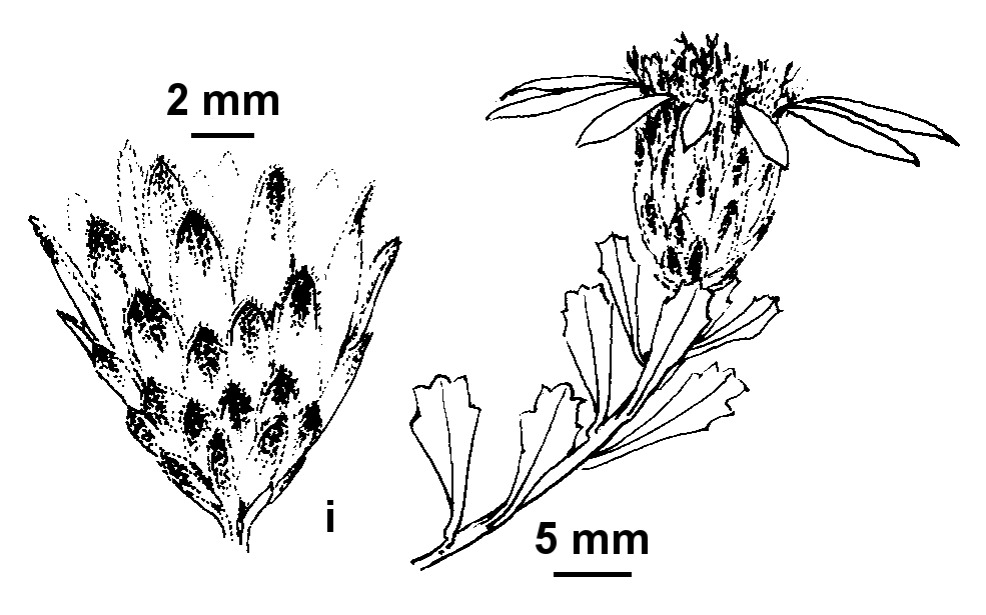Olearia calcarea
F.Muell. ex Benth.Spreading shrub to c. 0.8 m high; branchlets glabrous, resinous. Leaves spathulate to obovate, 8–15 mm long, 3–10 mm wide, glabrous, resinous, slightly paler beneath, shallowly dentate toward apex, the narrowly tapered base shortly decurrent on the stem; margin flat. Capitula terminal, solitary, sessile or subsessile, 31–45 mm diam.; involucre conical, 9–12 mm long; bracts 6–8-seriate, graduating, glabrous, resinous, conspicuously darker toward apex, margin often minutely ciliate. Ray florets 9–13, pale purple to white, ligules 18–25 mm long; disc florets 21–30, yellow. Cypsela cylindric, 4–6-ribbed, 5–6 mm long, sericeous; pappus bristles white to straw-coloured, 8–10 mm long. Flowers Jul.–Sep.
MuM. Also WA, SA, NSW. Rare in Victoria, confined to the far north-west, usually on loamy, limestone-rich soils in mallee woodland communities.
In many respects (leaf size and shape, capitulum size, colour of ray florets) intermediate between O. muelleri and O. magniflora and perhaps a hybrid between those species, both certainly being present at several sites from which O. calcarea has been recorded in Victoria.
Walsh, N.G.; Lander, N.S. (1999). Olearia. In: Walsh, N.G.; Entwisle, T.J., Flora of Victoria Vol. 4, Cornaceae to Asteraceae, pp. 886–912. Inkata Press, Melbourne.
 Spinning
Spinning


